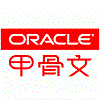Docker Compose Networking
Docker Compose Networking
Docker Compose sets up a single network for your application(s) by default, adding each container for a service to the default network. Containers on a single network can reach and discover every other container on the network.
Networking Basics
Running the command docker network ls will list out your current Docker networks; it should look similar to the following:
$ docker network ls NETWORK ID NAME DRIVER 17cc61328fef bridge bridge 098520f7fce0 composedjango_default bridge 1ce3c572afc6 composeflask_default bridge 8fd07d456e6c host host 3b578b919641 none null
You can alter the network name with the -p or --project-name flags or the COMPOSE_PROJECT_NAME environment variable. (In the event you need to run multiple projects on a single host, it’s recommended to set project names via the flag.)
In our compose_django example, web can access the PostgreSQL database from postgres://postgres:5432. We can access web from the outside world via port 8000 on the Docker host (only because the web service explicitly maps port 8000.
Updating Containers on the Network
You can change service configurations via the Docker Compose file. When you run docker-compose up to update the containers, Compose removes the old container and inserts a new one. The new container has a different IP address than the old one, but they have the same name. Containers with open connections to the old container close those connections, look up the new container by its name, and connect.
Linking Containers
You may define additional aliases that services can use to reach one another. Services on the same network can already reach one another. In the example below, we allow web to reach db via one of two hostnames (db or database):
version: '2'services: web: build: . links: - "db:database" db: image: postgres
If you do not specify a second hostname (for example, - db instead of - "db:database"), Docker Compose uses the service name (db). Links express dependency like depends_ondoes, meaning links dictate the order of service startup.
Networking with Multiple Hosts
You may use the overlay driver when deploying Docker Compose to a Swarm cluster. We’ll cover more on Docker Swarm in a future article.
Configuring the Default Network
If you desire, you can configure the default network instead of (or in addition to) customizing your own network. Simply define a default entry under networks:
verision: '2'services: web: build: . ports: - "8000:8000" db: image: postgresnetworks: default: driver: custom-driver-1
Custom Networks
Specify your own networks with the top-level networks key, to allow creating more complex topologies and specify network drivers (and options). You can also use this configuration to connect services with external networks Docker Compose does not manage. Each service can specify which networks to connect to with its service-level networks key.
The following example defines two custom networks. Keep in mind, proxy cannot connect to db, as they do not share a network; however, app can connect to both. In the frontnetwork, we specify the IPv4 and IPv6 addresses to use (we have to configure an ipam block defining the subnet and gateway configurations). We could customize either network or neither one, but we do want to use separate drivers to separate the networks (review Basic Networking with Docker for a refresher):
version: '2'services: proxy: build: ./proxy networks: - front app: build: ./app networks: # you may set custom IP addresses front: ipv4_address: 172.16.238.10 ipv6_address: "2001:3984:3989::10" - back db: image: postgres networks: - backnetworks: front: # use the bridge driver, but enable IPv6 driver: bridge driver_opts: com.docker.network.enable_ipv6: "true" ipam: driver: default config: - subnet: 172.16.238.0/24 gateway: 172.16.238.1 - subnet: "2001:3984:3989::/64" gateway: "2001:3984:3989::1" back: # use a custom driver, with no options driver: custom-driver-1
Pre-Existing Networks
You can even use pre-existing networks with Docker Compose; just use the external option:
version: '2'networks: default: external: name: i-already-created-this
In this case, Docker Compose never creates the default network; instead connecting the app’s containers to the i-already-created-this network.
Common Issues
You’ll need to use version 2 of the Compose file format. (If you follow along with these tutorials, you already do.) Legacy (version 1) Compose files do not support networking. You can determine the version from the version: line in the docker-compose.yml file.
General YAML
Use quotes (“” or ‘’) whenever you have a colon (:) in your configuration values, to avoid confusion with key-value pairs.
Updating Containers
Container IP addresses change on update. Reference containers by name, not IP, whenever possible. Otherwise you’ll need to update the IP address you use.
Links
If you define both links and networks, linked services must share at least one network to communicate.
本文转自 zbill 51CTO博客,原文链接:http://blog.51cto.com/dek701/1983495,如需转载请自行联系原作者





